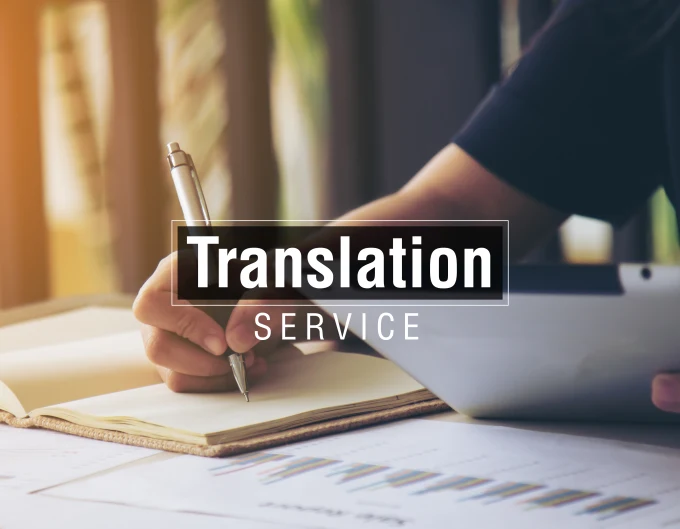
In a world where business, healthcare, law, and education regularly transcend borders, clear communication in multiple languages is more important than ever. Whether you need to translate a legal contract, localize a website, or provide real-time interpretation for a meeting, choosing the right translation and interpreting service is critical.
With so many providers offering different services, pricing models, and quality standards, how can you ensure you’re making the right choice? In this guide, we’ll explore the top 10 tips for selecting a translation service provider that meets your needs — and exceeds your expectations.
1. Understand the Difference Between Translation and Interpreting
Before choosing a provider, know what service you actually need.
-
Translation involves converting written content (like documents, websites, manuals) from one language to another.
-
Interpreting deals with spoken communication — either simultaneously or consecutively — in real-time or during scheduled sessions.
Some companies specialize in only one, while others, like Translit, offer both translation and interpreting services, making them more versatile partners for ongoing multilingual needs.
2. Define Your Goals and Requirements
What exactly do you need translated or interpreted?
-
Is it a one-off project or ongoing work?
-
Do you need industry-specific expertise (e.g., medical, legal, technical)?
-
Do you need certified translation for immigration or court use?
-
Is it live interpreting for a meeting, or do you need Video Remote Interpretation (VRI) for a multilingual webinar?
Clearly outlining your objectives will help you match with the right service provider who can handle your scope effectively.
3. Check for Industry Expertise
Not all translations are created equal. A marketing brochure requires a different skillset than a medical report. Choose a provider with experience in your industry. Look for:
-
Legal translators for contracts, patents, and court documents
-
Medical interpreters for hospital and clinical settings
-
Technical translators for software manuals and engineering specs
-
Business interpreters for international meetings and negotiations
Ask for samples or case studies in your industry to verify their expertise.
4. Ask About Human vs. Machine Translation
While machine translation tools like Google Translate have improved, they still lack the nuance, accuracy, and cultural understanding that human translators provide.
Some providers use hybrid models (machine-assisted translation with human review), but for critical content, human translation is a must.
Ensure the provider employs native-speaking, professional translators, and ask about their use of tools like Translation Memory (TM) for consistency across projects.
5. Verify Quality Assurance Processes
Professional language service providers follow a structured process:
-
Initial translation
-
Editing and proofreading by a second linguist
-
Final quality assurance review
Don’t hesitate to ask about these steps. The best agencies will have ISO certifications or similar quality standards and won’t cut corners on accuracy or clarity.
6. Consider Interpreting Capabilities
If your needs include interpreting services — such as for meetings, legal proceedings, medical consultations, or conferences — check whether the provider offers:
-
Simultaneous interpreting
-
Consecutive interpreting
-
Over-the-phone interpreting (OPI)
-
Video Remote Interpretation (VRI)
VRI, in particular, is growing in popularity for its convenience and speed. Providers like Translit allow you to access interpreters remotely through secure, GDPR-compliant platforms — no travel or scheduling headaches involved.
7. Look for Certification and Credentials
When dealing with sensitive content, especially for legal or immigration purposes, certified translations are often required by governments, courts, and other institutions.
Make sure the service provider offers:
-
Certified translators recognized by professional bodies (like ITIA, ATA, or NRPSI)
-
Notarized or sworn translations if needed
-
Interpreters who are accredited for courtroom or healthcare settings
Certification is a sign of professionalism and reliability — don’t overlook it.
8. Evaluate Language and Regional Coverage
Language is complex, and many languages have multiple dialects or regional variants. For example:
-
Spanish differs in Spain, Mexico, and Argentina
-
Arabic has Modern Standard and dozens of local dialects
-
French in France differs from French in Canada or West Africa
Choose a provider that offers regional localization and understands your target audience. A good provider should also support multilingual projects if you need translations in several languages at once.
9. Compare Pricing, But Don’t Compromise on Quality
Translation and interpreting services can vary widely in cost, depending on language pair, complexity, urgency, and specialization.
Look out for:
-
Transparent pricing structures
-
Volume discounts for ongoing projects
-
Rush fees for urgent requests
Avoid providers that offer extremely low prices — they often rely on machine translation or unqualified freelancers. Instead, balance cost with quality and reliability.
10. Check Reviews, Testimonials, and Client Support
Finally, do your due diligence. Read online reviews, request client references, and test their customer support.
Ask questions like:
-
How quickly do they respond to inquiries?
-
Can they handle urgent or large-volume requests?
-
Do they offer project managers for coordination?
A responsive, professional provider will not only deliver accurate translations but also communicate clearly and support you throughout the project.
Bonus: Why Choose a Full-Service Language Partner?
If you anticipate ongoing needs for both interpreting and translation, it’s wise to choose a full-service language partner like Translit. Their end-to-end offerings include:
-
Document translation
-
Certified and sworn translations
-
On-site and remote interpreting (including VRI and OPI)
-
Localization for websites and software
-
Multilingual project management
Working with a single, reliable provider ensures consistency, security, and seamless communication across your entire organization.
Final Thoughts
Choosing the right translation and interpreting service is about more than just language — it’s about finding a trusted partner who understands your industry, communicates clearly, and delivers consistent, high-quality results.
By following these 10 tips, you’ll be well-equipped to select a provider that not only meets your needs but enhances your ability to communicate across cultures and borders.
Whether you’re managing international clients, assisting non-English-speaking patients, or expanding to new markets, accurate and professional language services are essential for success.





